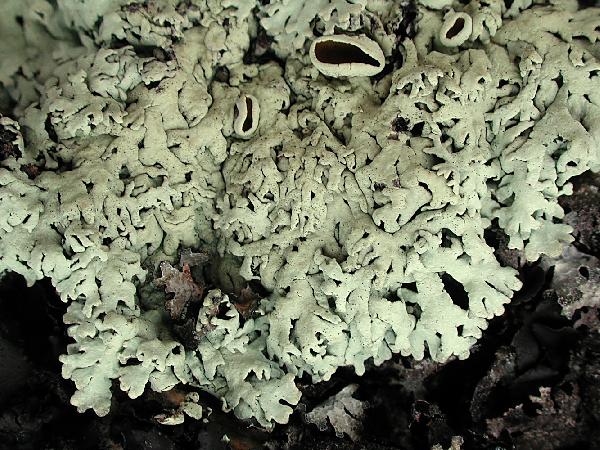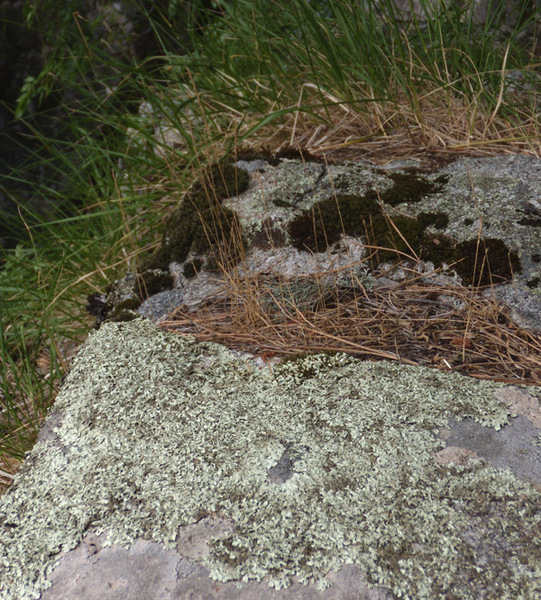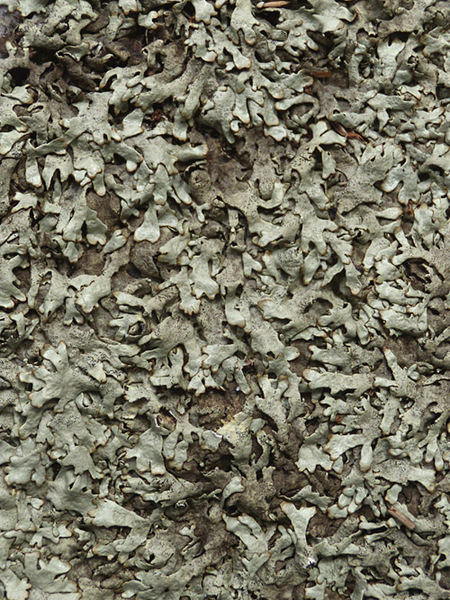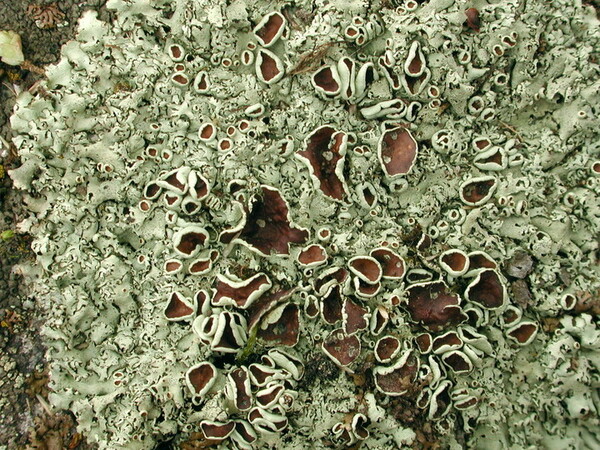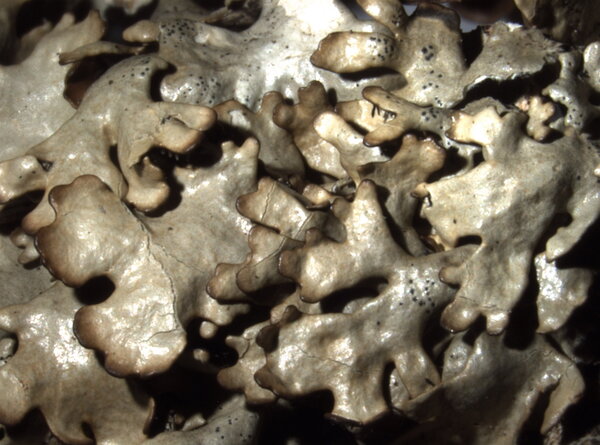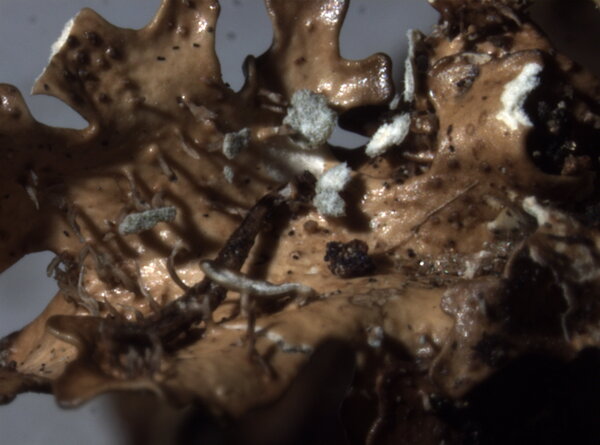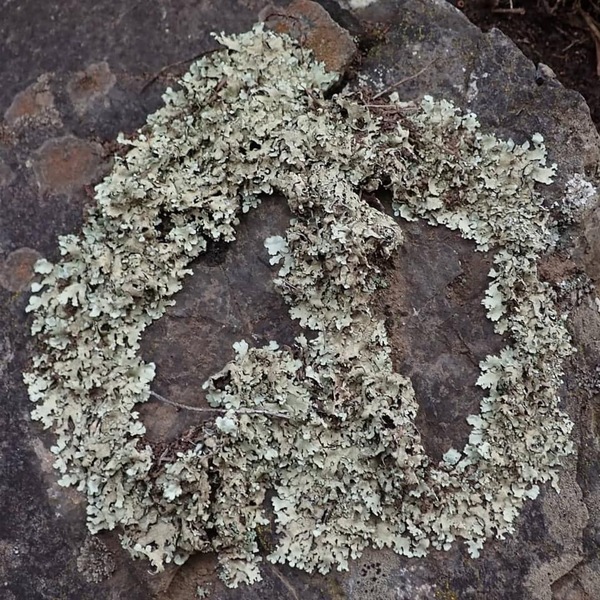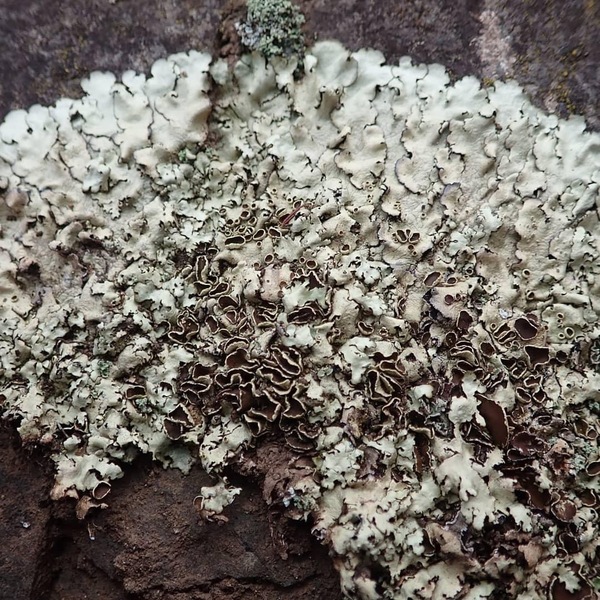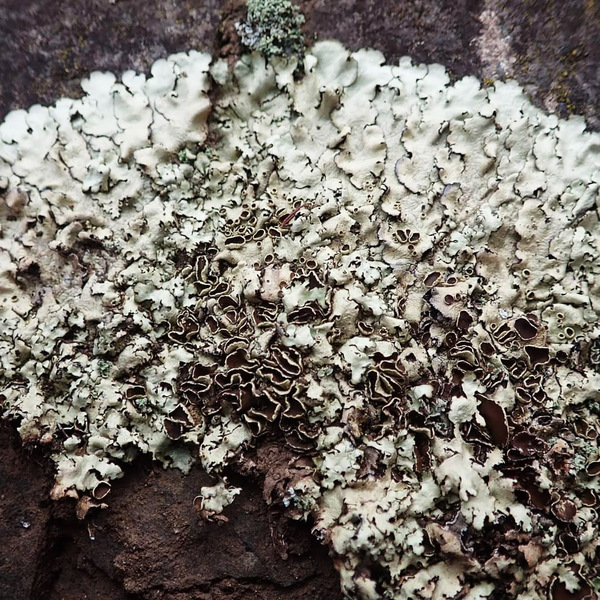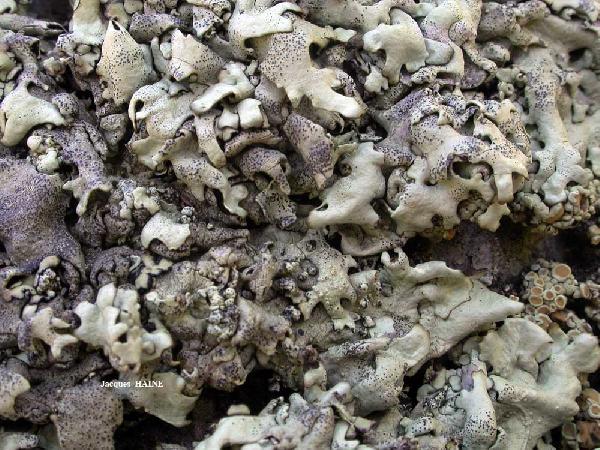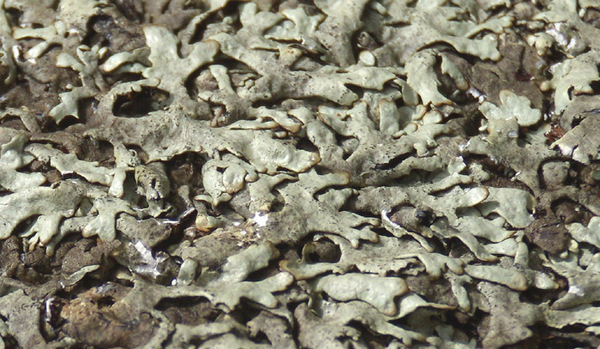Xanthoparmelia stenophylla (Ach.) Ahti & D. Hawksw.
Lichenologist, 37: 363, 2005. Basionym: Parmelia conspersa var. stenophylla Ach. - Meth. Lich.: 206, 1803.
Synonyms: Parmelia centrifuga var. stenophylla auct.; Parmelia conspersa f. convoluta Rabenh.; Parmelia conspersa var. heraultensis Gyeln.; Parmelia conspersa var. imbricata A. Massal.; Parmelia convoluta (Rabenh.) Gyeln.; Parmelia hypopallida Gyeln.; Parmelia imitans (Müll. Arg.) Gyeln.; Parmelia molliuscula auct. non Ach.; Parmelia somloënsis Gyeln.; Parmelia stenophylla (Ach.) Heugel; Parmelia taractica auct. non Kremp.; Xanthoparmelia somloënsis (Gyeln.) Hale; Xanthoparmelia taractica auct.
Description: Thallus foliose, heteromerous, dorsiventral, loosely attached, forming up to 20 cm wide patches. Lobes (0.5-)2-3(-5) mm broad, flattened, isotomic-dichotomously branched, more or less imbricate, the upper surface yellowish green, white-maculate, the lower surface tan at margins, pale brown in central parts, with pale, mostly simple rhizines which are sparse at margin. Upper cortex paraplectenchymatous, with a pored epicortex, the cell walls with Xanthoparmelia-type lichenan; medulla white; lower cortex paraplectenchymatous. Apothecia frequent, lecanorine, strongly constricted at base, to 8(-15) mm across, with a brown, smooth disc and a smooth thalline margin. Epithecium brown; hymenium and hypothecium colourless; paraphyses simple; hypothecium colourless. Asci 8-spored, clavate, the K/I+ blue tholus penetrated by a faintly amyloid apical cushion with parallel or diverging flanks, the wall K/I-, surrounded by a K/I+ blue outer layer, Lecanora-type. Ascospores 1-celled, hyaline, ellipsoid, 8-11 x 4-6 µm. Pycnidia common, appearing as black dots on the upper surface. Conidia weakly dumbbel-shaped, 5-6 x c. 1 µm. Photobiont chlorococcoid. Spot tests: upper cortex K-, C-, KC+ yellow, P-; medulla K+ yellow turning red, C-, KC-, P+ orange-red. Chemistry: upper cortex with usnic acid; medulla with salazinic acid and traces of norstictic and protocetraric acids.
Growth form: Foliose, broad lobed
Photobiont: green algae other than Trentepohlia
Reproductive strategy: mainly sexual
Commonnes-rarity: (info)
Alpine belt: rare
Subalpine belt: rather rare
Montane belt: extremely rare
Dry submediterranean belt: very rare
Humid submediterranean belt: rather rare
Padanian area: extremely rare
pH of the substrata:
1 2 3 4 5
Solar irradiation:
1 2 3 4 5
Aridity:
1 2 3 4 5
Eutrophication:
1 2 3 4 5
Poleotolerance:
0 1 2 3
Altitudinal distribution:
1 2 3 4 5 6
Rarity
absent
extremely rare
very rare
rare
rather rare
rather common
common
very common
extremely common
Loading data...
Occurrence data
Predictive map
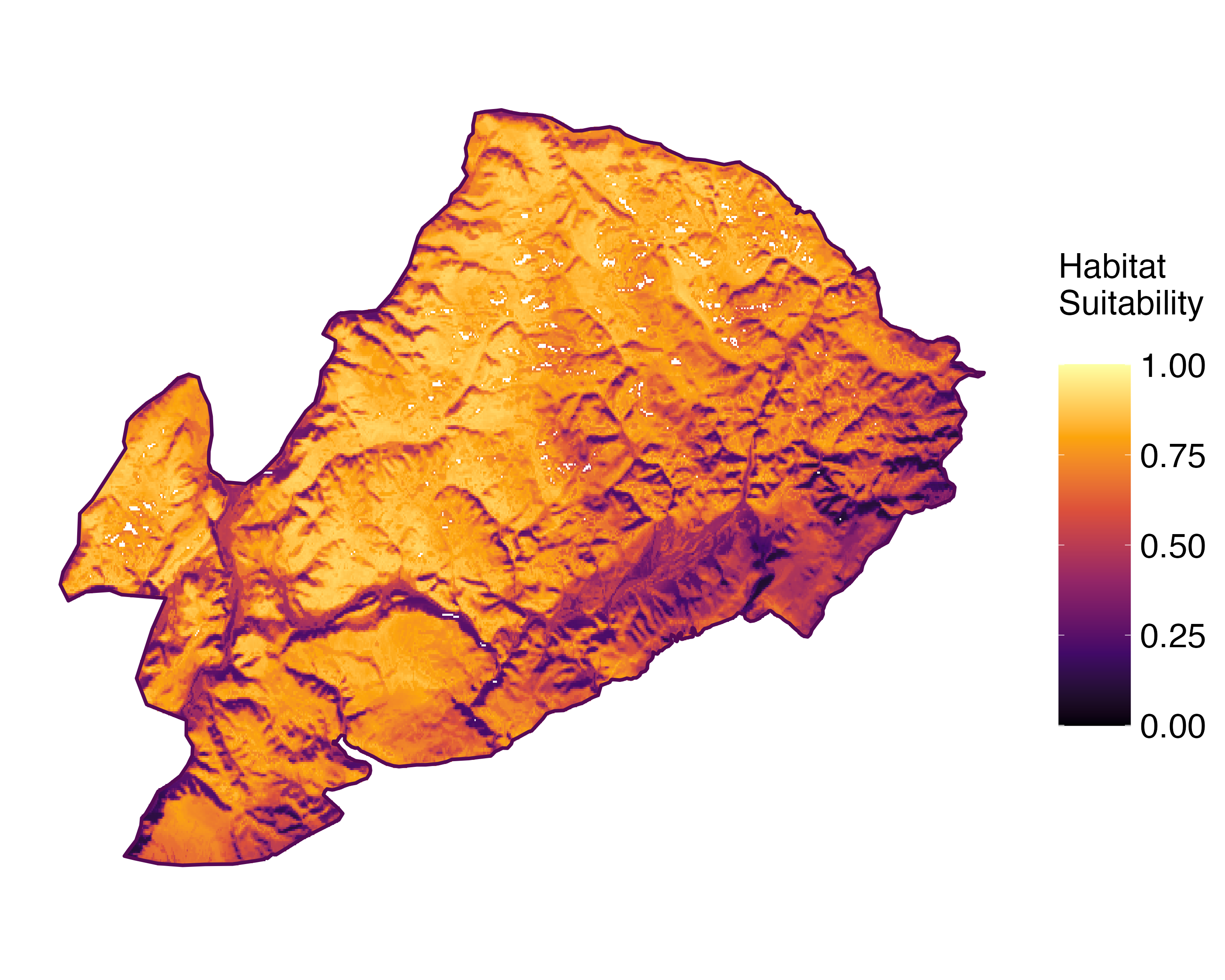 Current prediction (1981-2010)
Current prediction (1981-2010) Future prediction (2071-2100) SSP 1-2.6
Future prediction (2071-2100) SSP 1-2.6 Future prediction (2071-2100) SSP 5-8.5Predictive maps according to Francesconi et al. 2025
Future prediction (2071-2100) SSP 5-8.5Predictive maps according to Francesconi et al. 2025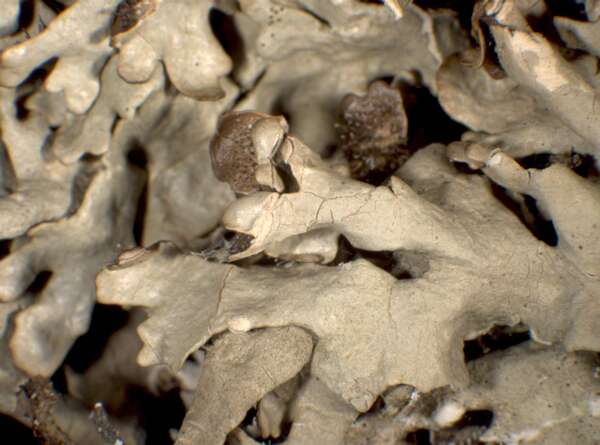
P.L. Nimis; Owner: Department of Life Sciences, University of Trieste
Herbarium: TSB (6688)
2002/02/13
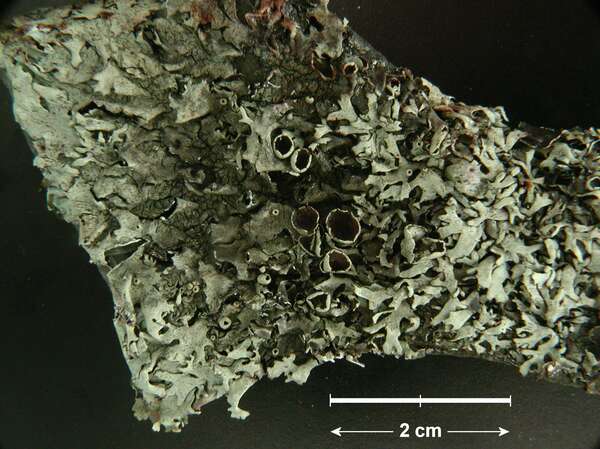
G. Incerti; Owner: Department of Life Sciences, University of Trieste
Herbarium: TSB (29101)
2001/11/26
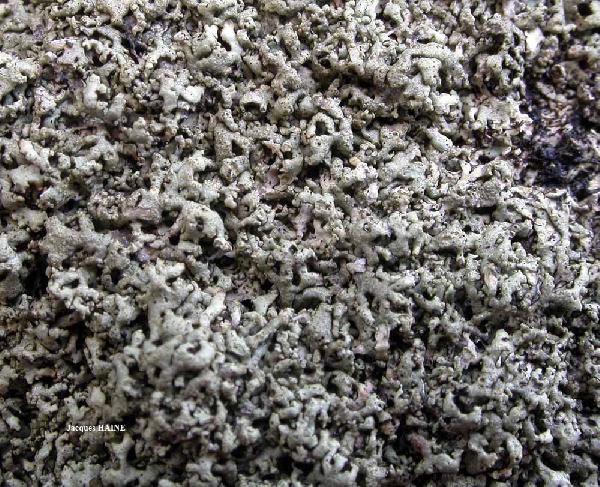
Jacques Haine - Source: http://www.lichensmaritimes.org/index.php?task=fiche&lichen=553&lang=en
Belgium, Monthermé
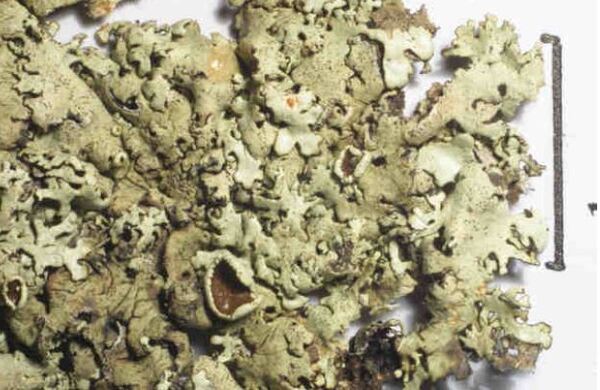
Felix Schumm – CC BY-SA 4.0
Image from: F. Schumm (2008) - Flechten Madeiras, der Kanaren und Azoren. Beck, OHG - ISBN: 978-3-00-023700-3
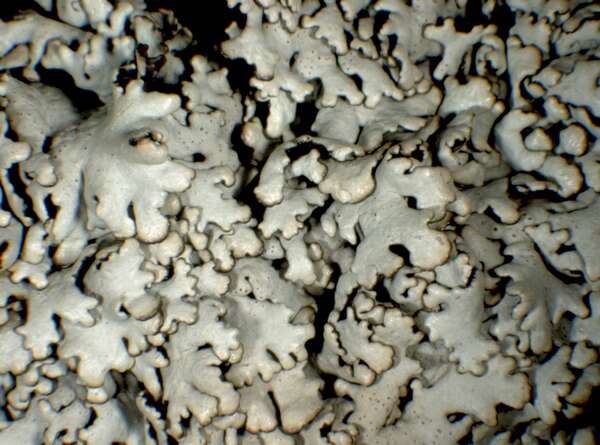
P.L. Nimis; Owner: Department of Life Sciences, University of Trieste
Herbarium: TSB (34441)
2002/01/14
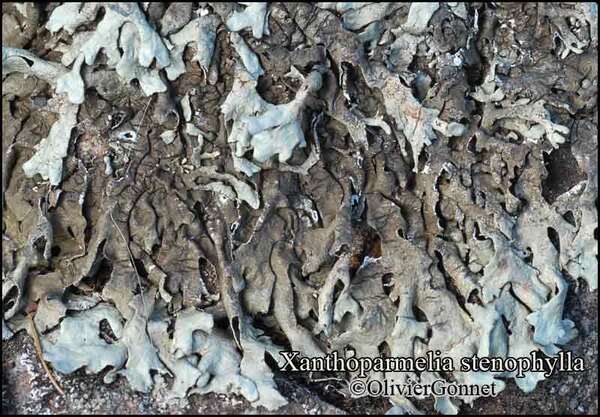
Courtesy Danièle et Olivier Gonnet - Source: https://www.afl-lichenologie.fr/Photos_AFL/Photos_AFL_X/Xanthoparmelia_stenophylla.htm
France, session AFL 2010 - Hérault
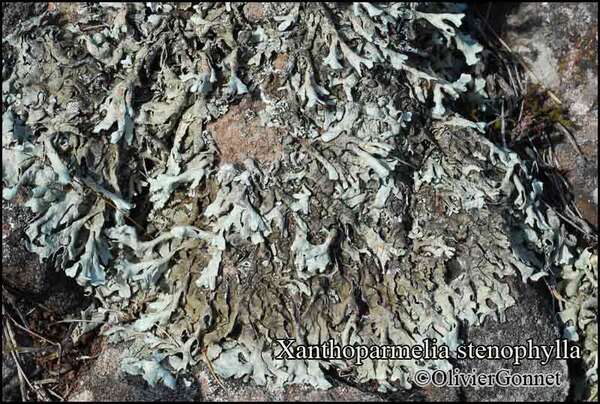
Courtesy Danièle et Olivier Gonnet - Source: https://www.afl-lichenologie.fr/Photos_AFL/Photos_AFL_X/Xanthoparmelia_stenophylla.htm
France, session AFL 2010 - Hérault
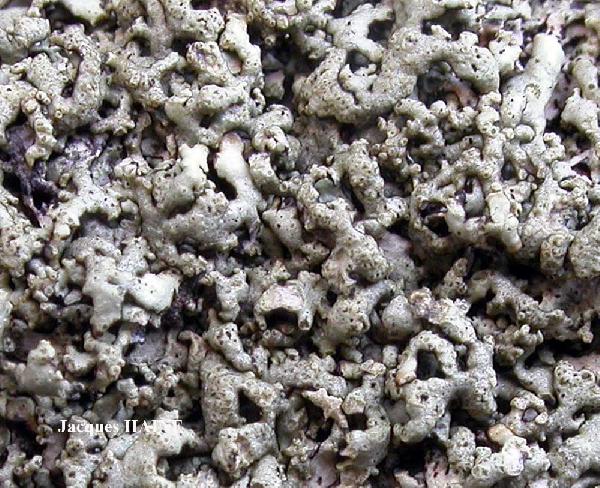
Jacques Haine - Source: http://www.lichensmaritimes.org/index.php?task=fiche&lichen=553&lang=en
Belgium, Monthermé
Growth form: Foliose, broad lobed
Photobiont: green algae other than Trentepohlia
Reproductive strategy: mainly sexual
Commonnes-rarity: (info)
Alpine belt: rare
Subalpine belt: rather rare
Montane belt: extremely rare
Dry submediterranean belt: very rare
Humid submediterranean belt: rather rare
Padanian area: extremely rare
pH of the substrata:
| 1 | 2 | 3 | 4 | 5 |
Solar irradiation:
| 1 | 2 | 3 | 4 | 5 |
Aridity:
| 1 | 2 | 3 | 4 | 5 |
Eutrophication:
| 1 | 2 | 3 | 4 | 5 |
Poleotolerance:
| 0 | 1 | 2 | 3 |
Altitudinal distribution:
| 1 | 2 | 3 | 4 | 5 | 6 |
Rarity
absent
extremely rare
very rare
rare
rather rare
rather common
common
very common
extremely common
Loading data...
Occurrence data
Predictive map
 Current prediction (1981-2010)
Current prediction (1981-2010) Future prediction (2071-2100) SSP 1-2.6
Future prediction (2071-2100) SSP 1-2.6 Future prediction (2071-2100) SSP 5-8.5
Future prediction (2071-2100) SSP 5-8.5Predictive maps according to Francesconi et al. 2025

P.L. Nimis; Owner: Department of Life Sciences, University of Trieste
Herbarium: TSB (6688)
2002/02/13

G. Incerti; Owner: Department of Life Sciences, University of Trieste
Herbarium: TSB (29101)
2001/11/26

Jacques Haine - Source: http://www.lichensmaritimes.org/index.php?task=fiche&lichen=553&lang=en
Belgium, Monthermé

Felix Schumm – CC BY-SA 4.0
Image from: F. Schumm (2008) - Flechten Madeiras, der Kanaren und Azoren. Beck, OHG - ISBN: 978-3-00-023700-3

P.L. Nimis; Owner: Department of Life Sciences, University of Trieste
Herbarium: TSB (34441)
2002/01/14

Courtesy Danièle et Olivier Gonnet - Source: https://www.afl-lichenologie.fr/Photos_AFL/Photos_AFL_X/Xanthoparmelia_stenophylla.htm
France, session AFL 2010 - Hérault

Courtesy Danièle et Olivier Gonnet - Source: https://www.afl-lichenologie.fr/Photos_AFL/Photos_AFL_X/Xanthoparmelia_stenophylla.htm
France, session AFL 2010 - Hérault



